Complete Solutions to Level 2 Comprehension Based of chapter ELECTROMAGNETIC INDUCTION of Class 12 book with complete answers and questions
| Class 12 | PHYSICS |
| Chapter | ELECTROMAGNETIC INDUCTION |
| DC PANDEY | Level 2 Comprehension Based |
| Number Of Questions | 13 |
| Academic Year | 2023-24 |
A uniform but time varying magnetic field `B=(2t^3+24t)T` is present in a cylindrical region of radius `R =2.5` cm as shown in figure.
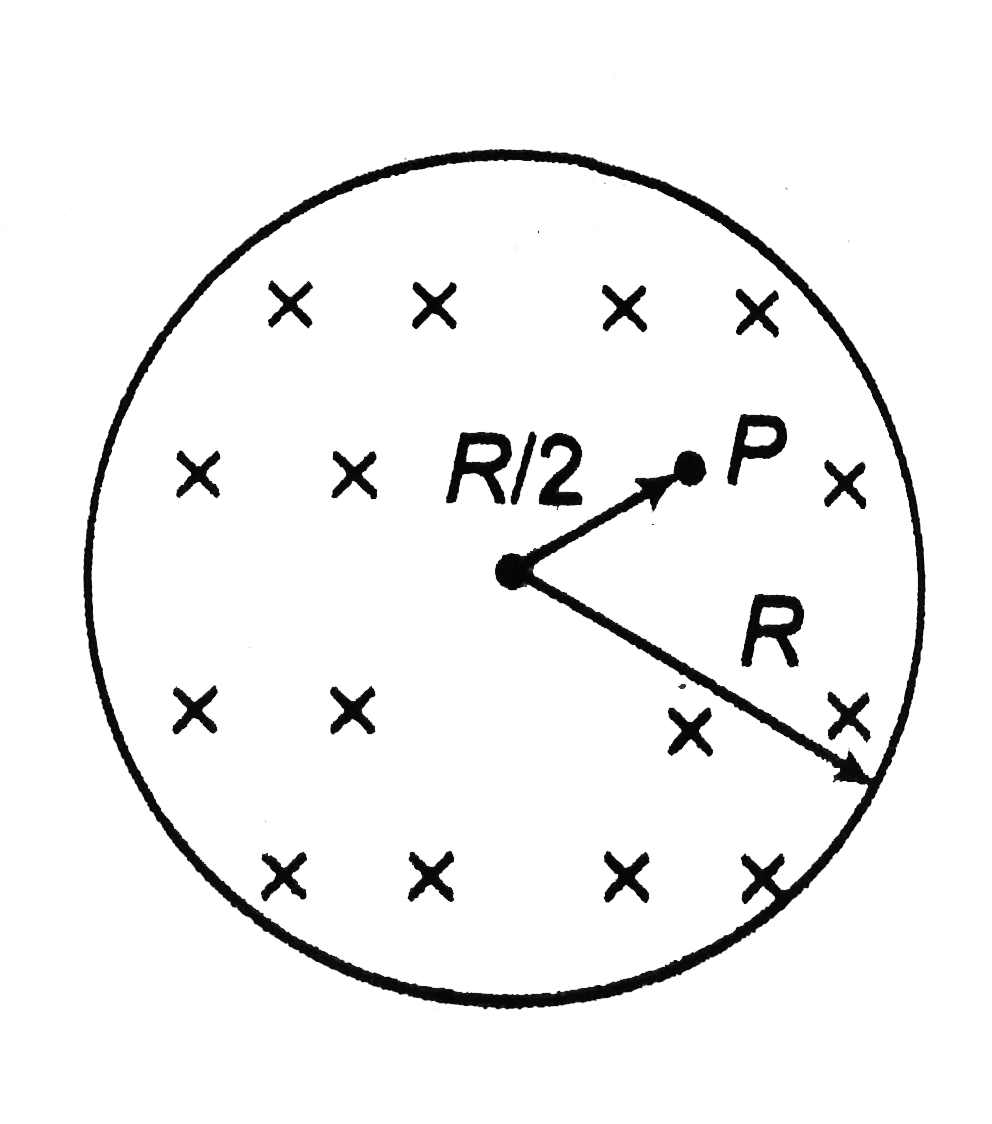
The force on an electron at `P` at `t=2.0` s is
View SolutionA uniform but time varying magnetic field `B=(2t^3+24t)T` is present in a cylindrical region of radius `R =2.5 cm` as shown in figure.

The variation of electric field at any instant as a function of distance measured from the centre of cylinder in first problem is
View SolutionA uniform but time varying magnetic field `B=(2t^3+24t)T` is present in a cylindrical region of radius `R =2.5 cm` as shown in figure.
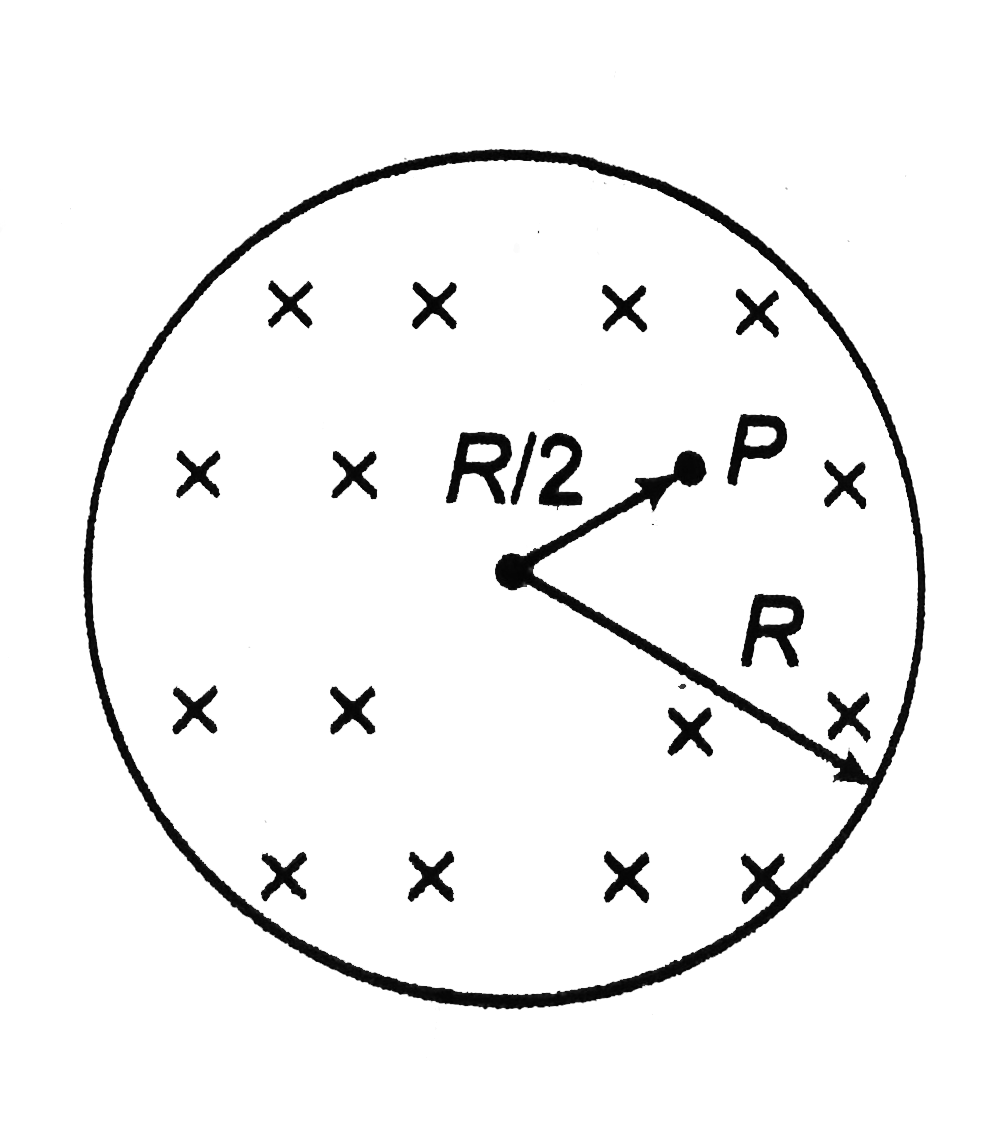
In the previous problem, the direction of circular electric lines at `t=1 s` is
View SolutionA thin non conducting ring of mass `m`, radius a carrying a charge `q` can rotate freely about its own axis which is vertical. At the initial moment, the ring was at rest in horizontal position and no magnetic field was present. At instant `t=0`, a uniform magnetic field is switched on which is vertically downward and increases with time according to the law `B=B_0t`. Neglecting magnetism induced due to rotational motion of ring.
The magnitude of induced emf of the closed surface of ring will be
View SolutionA thin non conducting ring of mass `m`, radius a carrying a charge `q` can rotate freely about its own axis which is vertical. At the initial moment, the ring was at rest in horizontal position and no magnetic field was present. At instant `t=0`, a uniform magnetic field is switched on which is vertically downward and increases with time according to the law `B=B_0t`. Neglecting magnetism induced due to rotational motion of ring.
The magnitude of an electric field on the circumference of the ring is
View SolutionA thin non conducting ring of mass `m`, radius a carrying a charge `q` can rotate freely about its own axis which is vertical. At the initial moment, the ring was at rest in horizontal position and no magnetic field was present. At instant `t=0`, a uniform magnetic field is switched on which is vertically downward and increases with time according to the law `B=B_0t`. Neglecting magnetism induced due to rotational motion of ring.
Angular acceleration of ring is
View SolutionA thin non conducting ring of mass `m`, radius a carrying a charge `q` can rotate freely about its own axis which is vertical. At the initial moment, the ring was at rest in horizontal position and no magnetic field was present. At instant `t=0`, a uniform magnetic field is switched on which is vertically downward and increases with time according to the law `B=B_0t`. Neglecting magnetism induced due to rotational motion of ring.
Find intantaneous power developed by electric force acting on the ring at `t=1`s
View SolutionFigure shows a conducting rod of negligible resistance that can slide on smooth U-shaped rail made of wire of resistance `1Omega//m`. Position of the conducting rod at `t=0` is shown. A time dependent magnetic field `B=2t` tesla is switched on at `t=0`
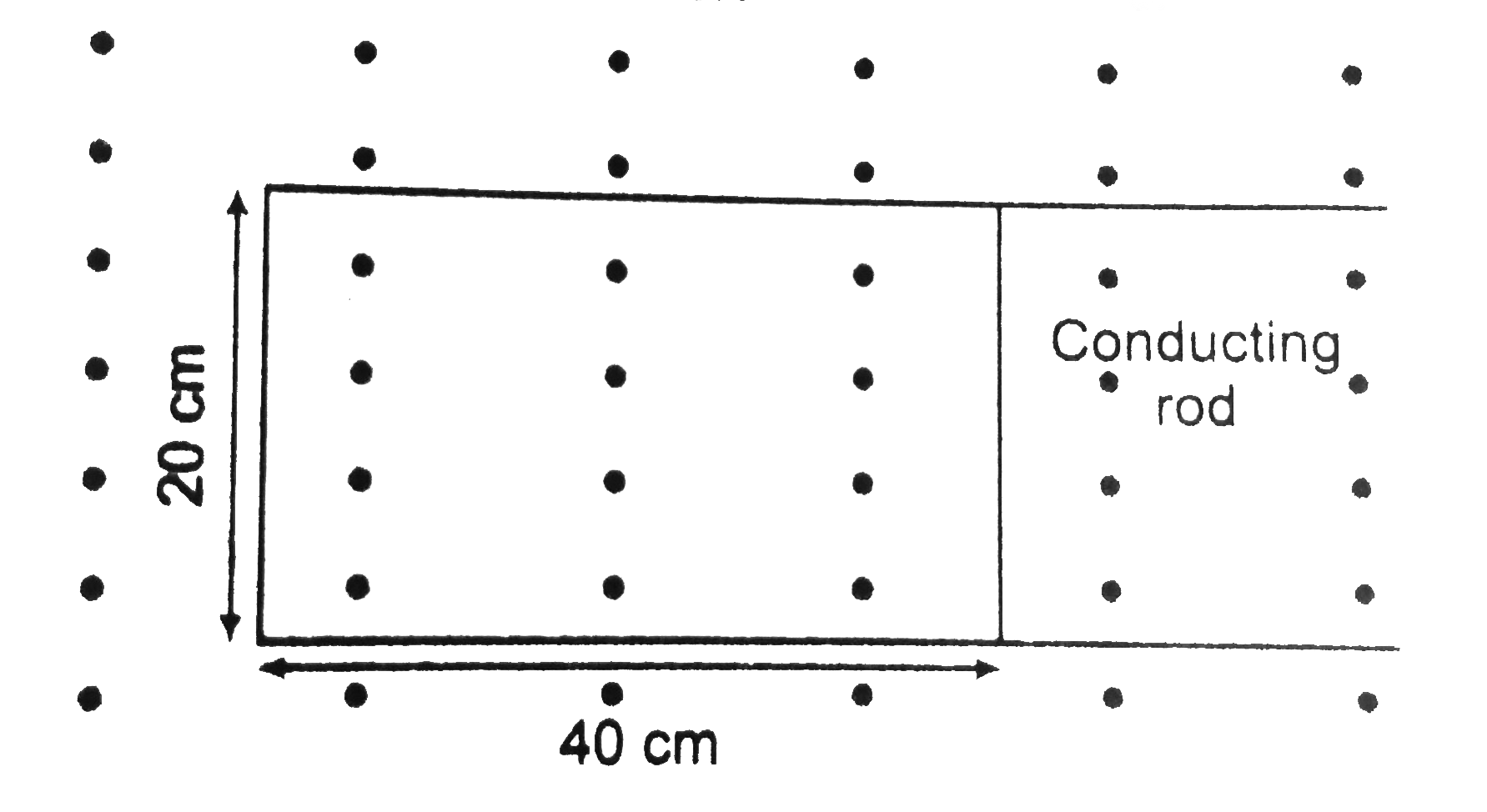
The current in the loop at `t=0` due to induced emf is
View SolutionFigure shows a conducting rod of negligible resistance that can slide on smooth U-shaped rail made of wire of resistance `1Omega//m`. Position of the conducting rod at `t=0` is shown. A time dependent magnetic field `B=2t` tesla is switched on at `t=0`
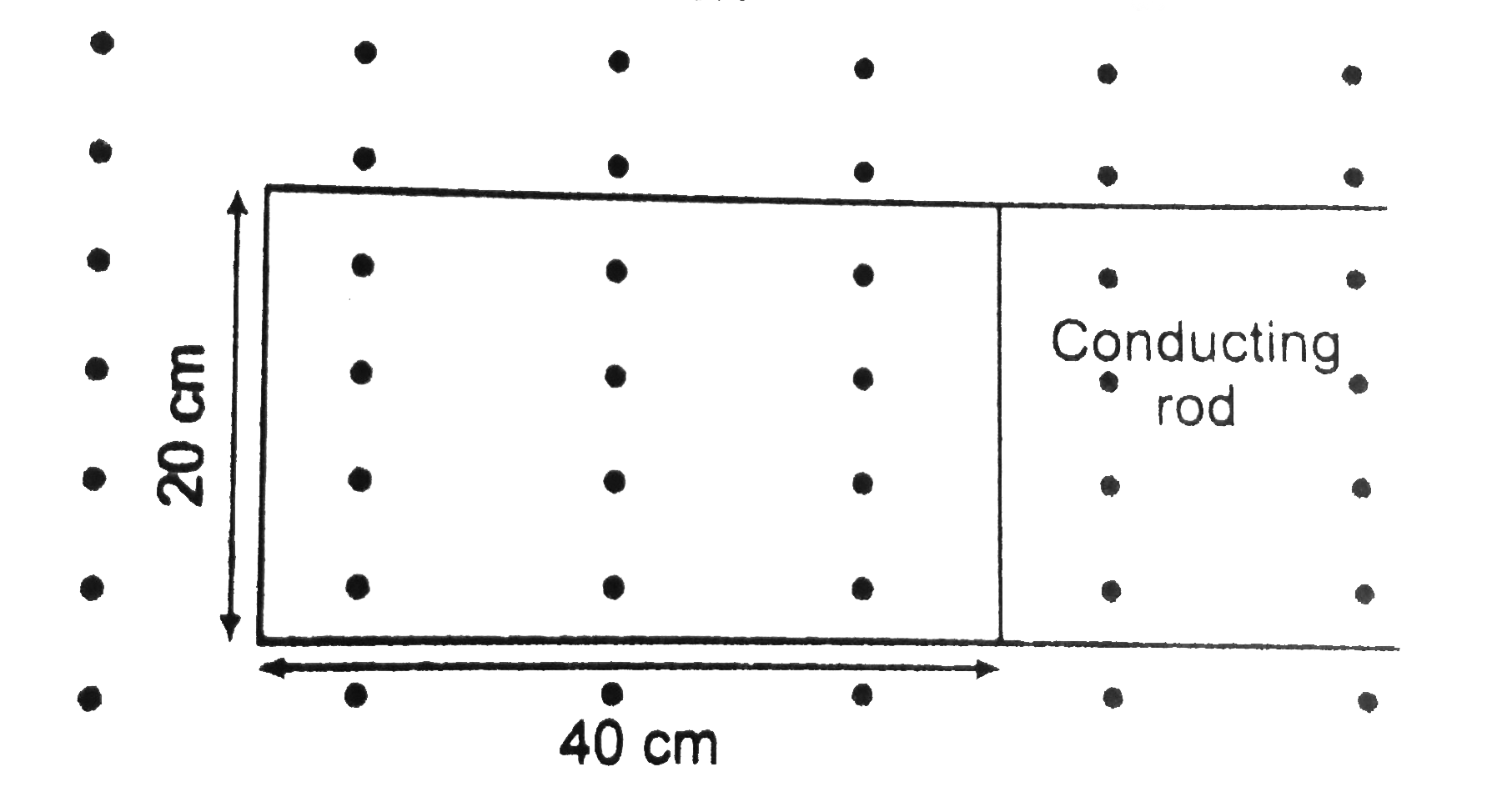
At `t=0`, when the magnetic field is switched on, the conducting rod is moved to the left at constant speed `5cm//s` by some external means. At `t=2s`, net induced emf has magnitude
View SolutionFigure shows a conducting rod of negligible resistance that can slide on smooth U-shaped rail made of wire of resistance `1Omega//m`. Position of the conducting rod at `t=0` is shown. A time dependent magnetic field `B=2t` tesla is switched on at `t=0`
 The magnitude of the force required to move the conducting rod at constant speed 5cm/s at the same instant `t=2s`, is equal to
The magnitude of the force required to move the conducting rod at constant speed 5cm/s at the same instant `t=2s`, is equal to
View SolutionTwo parallel vertical metallic rails `AB` and `CD` are separated by `1m`. They are connected at the two ends by resistances `R_1` and `R_2` as shown in the figure. A horizontal metallic bar `l` of mass `0.2 kg` slides without friction, vertically down the rails under the action of gravity. There is a uniform horizontal magnetic field of `0.6 T` perpendicular to the plane of the rails. It is observed that when the terminal velocity is attained, the powers dissipated in `R_1` and `R_2` are `0.76W` and `1.2W` respectively `(g=9.8m//s^2)`
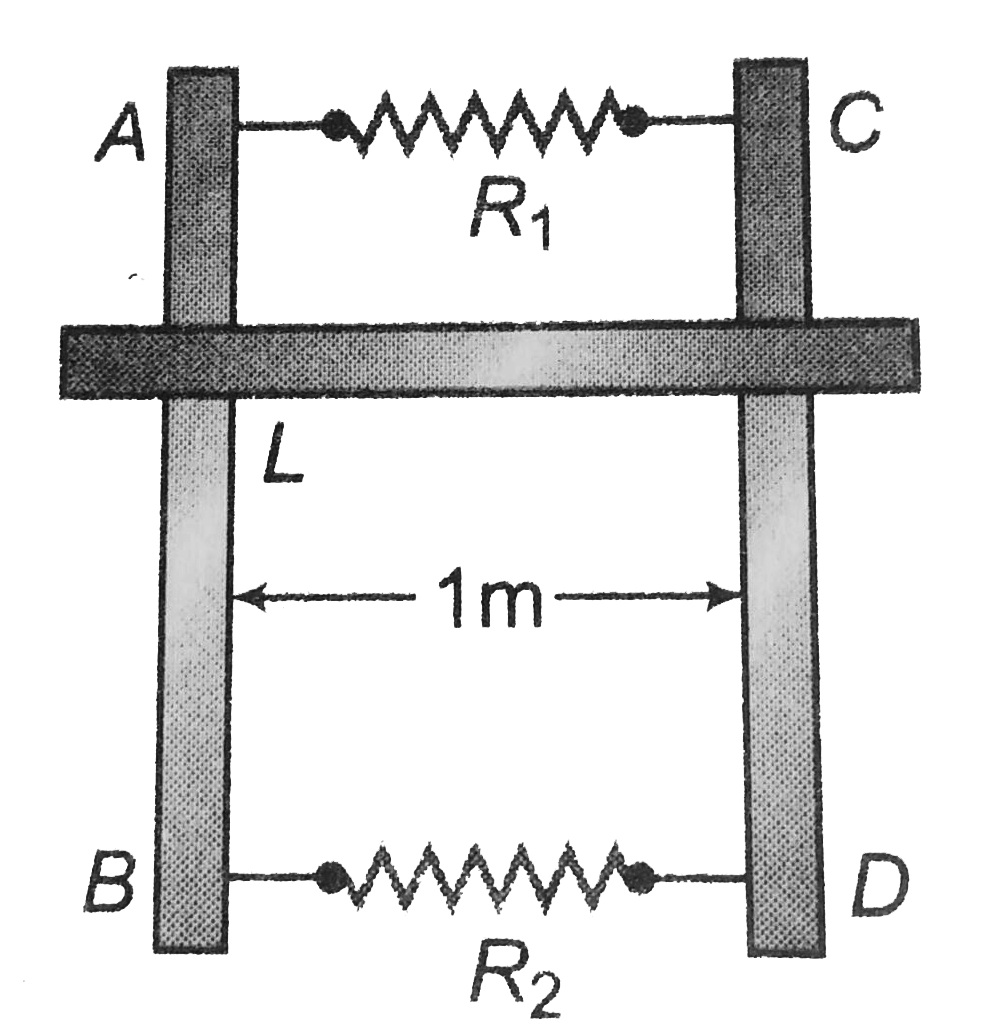
The terminal velocity fo the bar L will be
View SolutionTwo parallel vertical metallic rails `AB` and `CD` are separated by `1m`. They are connected at the two ends by resistances `R_1` and `R_2` as shown in the figure. A horizontal metallic bar `l` of mass `0.2 kg` slides without friction, vertically down the rails under the action of gravity. There is a uniform horizontal magnetic field of `0.6 T` perpendicular to the plane of the rails. It is observed that when the terminal velocity is attained, the powers dissipated in `R_1` and `R_2` are `0.76W` and `1.2W` respectively `(g=9.8m//s^2)`

The value of `R_1` is
View SolutionTwo parallel vertical metallic rails `AB` and `CD` are separated by `1m`. They are connected at the two ends by resistances `R_1` and `R_2` as shown in the figure. A horizontal metallic bar `l` of mass `0.2 kg` slides without friction, vertically down the rails under the action of gravity. There is a uniform horizontal magnetic field of `0.6 T` perpendicular to the plane of the rails. It is observed that when the terminal velocity is attained, the powers dissipated in `R_1` and `R_2` are `0.76W` and `1.2W` respectively `(g=9.8m//s^2)`

The value of `R_2`is
View Solution
Level 2 Comprehension Based questions and complete solutions for chapter ELECTROMAGNETIC INDUCTION of DC PANDEY ENGLISH of Class 12
All Exercises from DC PANDEY Class 12 PHYSICS ELECTROMAGNETIC INDUCTION
- Check point
- Example
- Example Type 1
- Example Type 2
- Example Type 3
- Example Type 4
- Example Type 5
- Example Type 6
- Exercise 27.1
- Exercise 27.2
- Exercise 27.3
- Exercise 27.4
- Exercise 27.5
- Exercise 27.6
- Exercise 27.7
- Level 1 Assertion And Reason
- Level 1 Objective
- Level 1 Subjective
- Level 2 Comprehension Based
- Level 2 More Than One Correct
- Level 2 Single Correct
- Level 2 Subjective
- Match the columns
- Medical entrance special format questions
- Medical entrances gallery
- Miscellaneous Examples
- Objective Questions
- SUBJECTIVE TYPE
- Taking it together